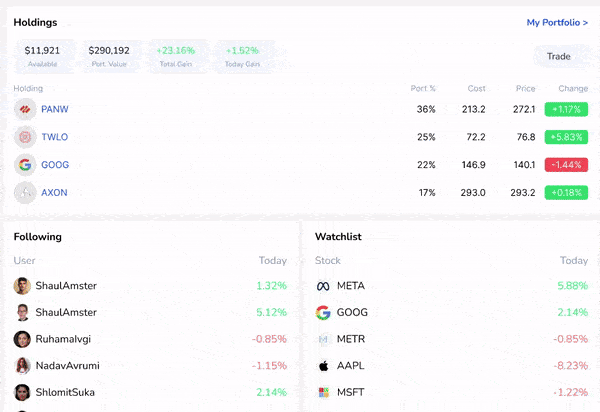Overview
In the last case study, I discussed how we identified our core users: young Americans aged 17-24 eager to learn investing through hands-on experience. In this case study, we’ll focus on how we developed and tested three monetization strategies, leading to our first revenue.
Challenge
With a growing base of daily users actively engaging with the investing simulator, the challenge was to introduce monetization without disrupting user engagement. We needed to identify a strategy that not only provided value but also aligned with the “education by doing” ethos of users’ motivation. For that, I have decided to come up and test 3 concepts.
KPIs for Success
Retention Rate
We tracked retention rates to ensure that the monetized features enhanced overall user engagement without negatively impacting existing functionality. This involved monitoring two key aspects: avoiding cannibalization of core features like the investing simulator and ensuring that users returned specifically to engage with the new monetized features.
Conversion Rate
We tracked conversion rates to measure the effectiveness of turning free users into paying customers. This involved analyzing the flow funnel a user experienced when interacting with monetized features, identifying churn points, and refining the experience to minimize drop-off at critical stages.
Concepts Proofing
In order to pick the right monetization strategy, I decided to test and evaluate three distinct concepts with our users, understanding their preferences and engagement patterns.
PoC 1: Interactive Exercises and Quizzes
We’ve created a set of interactive widgets and quizzes that help users understand complex topics of investing, and integrated those in short text-based lessons.
PoC 2: Contextual AI Chatbot Educator
The second offered solution was a conversational AI chatbot that appears based on user trades on the platform, offering short insights on their recent action. So if a user bought Apple, which they usually did in their first iteration, the AI would offer the user insights on his purchase.

PoC 1: Contextual Bite Sized Video Lessons
Educational videos triggered by user actions, providing actionable insights (e.g., “Is Apple expensive?” after purchasing Apple shares).

2. Designing and Testing Monetization Strategies
To effectively monetize the platform, we first needed to deeply understand who our users were and why they were engaging with Jika.io. This involved a multi-pronged approach:
- Revised Onboarding: We adjusted the onboarding flow to prioritize user characterization over frictionless entry. By asking detailed, personal questions, we gained insights into user demographics, motivations, and goals.
- User Interviews: We reached out to users in multiple ways—through newsletter CTAs, platform pop-ups, and our own subreddit with over 800 members. Offering Amazon gift cards as incentives, we conducted interviews that revealed key behavioral patterns and preferences.
- Data Analysis: Using in-platform data, we mapped user actions, identifying what they valued most about the product. These insights helped refine our understanding of their priorities and pain points.
Outcome: This research revealed our core demographic: young Americans aged 17-24 who were eager to learn investing by managing realistic, hands-on portfolios. This understanding laid the groundwork for testing monetization strategies tailored to their needs.
1. Devising Monetization Strategies
We focused on two primary Proof of Concept (PoC) strategies:
- POC 1: Interactive Exercises and Quizzes: Engaging activities designed to deepen users’ understanding of stock analysis and investment strategies, allowing them to test their knowledge and apply it to real-world scenarios.
- AI Chatbot Educator: A conversational bot offering personalized learning prompts based on user behavior, such as asking, “Would you like to learn how to analyze companies like Apple?”
- Bite Size Video Lessons: Educational videos triggered by user actions, providing actionable insights (e.g., “Is Apple expensive?” after purchasing Apple shares).
